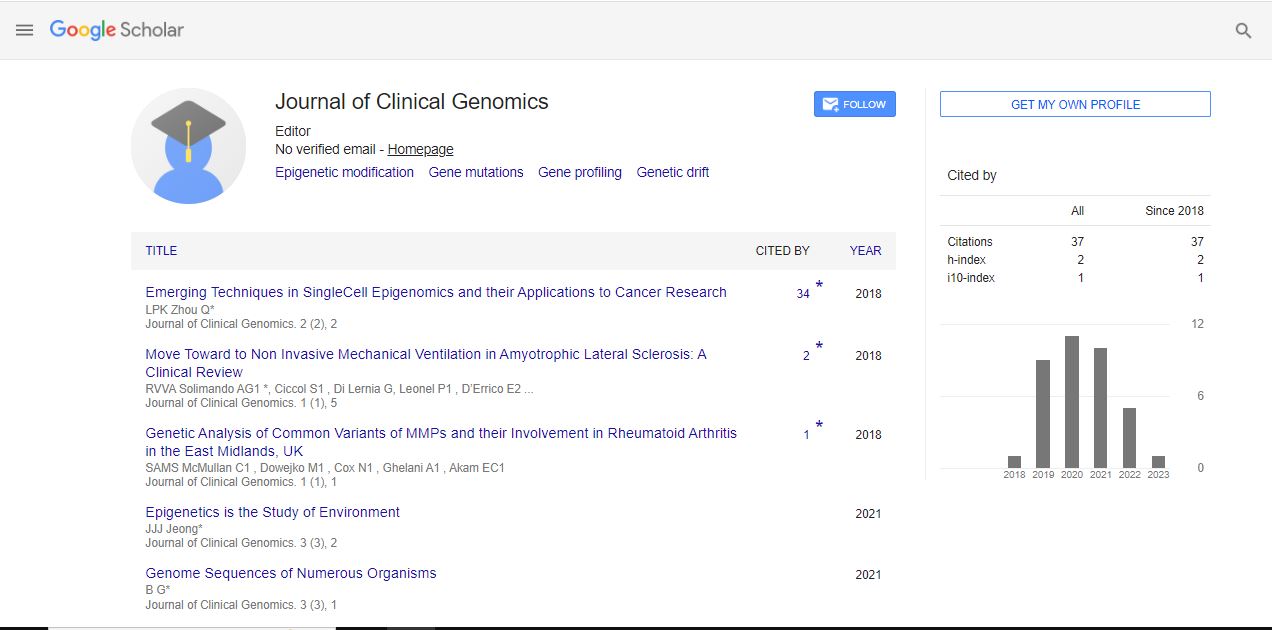Commentary, J Chromatography Res Vol: 6 Issue: 2
Micellar Electrokinetic Chromatography: Using Electro Migration to Determine Analyte Mysteries
Keyon Nazwanie*
1Department of Chemistry, University of Teknologi Malaysia, Johor, Malaysia
*Corresponding Author: Keyon Nazwanie,
Department of Chemistry, University
of Teknologi Malaysia, Johor, Malaysia
E-mail: nazwanie.k@gmail.com
Received date: 02 June, 2023, Manuscript No. JCGR-23-107801;
Editor assigned date: 05 June, 2023, PreQC No. JCGR-23-107801 (PQ);
Reviewed date: 19 June, 2023, QC No. JCGR-23-107801;
Revised date: 26 June, 2023, Manuscript No. JCGR-23-107801 (R);
Published date: 06 July, 2023, DOI: 10.4172/JCGR.1000064.
Citation: Nazwanie K (2023) Micellar Electrokinetic Chromatography: Using Electro Migration to Determine Analyte Mysteries. J Chromatography Res 6:2.
Description
Micelle Electrokinetic Chromatography (MEKC) is a reliable and adaptive analytic technique that combines the principles of both chromatography and electrophoresis. Developed in the 1980s, MEKC has acquired widespread adoption in various scientific fields, including pharmaceuticals, environmental analysis, and biochemistry. This unique chromatographic method involves the use of a micellar solution as the mobile phase to facilitate the separation and analysis of diverse analytes, including charged and neutral compounds.
Principles of micellar electrokinetic chromatography
The principle of micellar electrokinetic chromatography is based on the interaction between analytes and micelles in the presence of an electric field. The process involves the following steps:
Mobile phase: The mobile phase in MEKC is typically an aqueous protecting method containing a surfactant or micelle-forming agent. Common surfactants used include Sodium Dodecyl Sulfate (SDS) and Cetyltrimethylammonium Bromide (CTAB). These surfactants form micelles in the aqueous solution.
Sample injection: The sample containing the analytes is introduced into the capillary or separation channel using various injection techniques, such as hydrodynamic injection or electrokinetic injection.
Electrophoresis: An electric field is applied across the separation channel, creating a voltage gradient. The charged micelles, which migrate toward the cathode due to their charge, transfer both neutral and charged analytes.
Separation mechanism: As the micelles move through the separation channel, analytes are distributed between the mobile phase and the micellar phase based on their interactions with the micelles and the stationary phase. Neutral analytes are solubilized in the micelles, while charged analytes migrate at different rates depending on their charge and size.
Detection: After elution from the separation channel, the separated analytes are detected and quantified using various detectors, such as UV-visible detectors, fluorescence detectors, or mass spectrometers.
Advantages of micellar electrokinetic chromatography
Micellar electrokinetic chromatography provides several different advantages over other chromatographic methods, including:
Versatility: MEKC is highly versatile, capable of analyzing a wide range of analytes, including charged, neutral, and hydrophobic compounds.
Enhanced sensitivity: The use of micellar solutions in MEKC enhances the sensitivity of detection for certain analytes, particularly those with low UV absorption or fluorescence properties.
Simplified sample preparation: MEKC requires minimal sample preparation, dilution is frequently used in the mobile phase, and reducing the risk of sample loss or contamination.
High resolution: MEKC provides high separation efficiency and resolution, enabling the analysis of complex mixtures with highest overlapping.
Short analysis time: The fast migration of analytes in MEKC allows for immediate assessment, consequently, it is appropriate for high-throughput applications.
Applications of micellar electrokinetic chromatography
Pharmaceutical analysis: MEKC is extensively used in pharmaceutical research for the analysis of drug compounds, impurities, and enantiomers.
Environmental monitoring: Mice llar electrokinetic chromatography is applied in environmental analysis to detect and quamtify pollutants, herbicides, and pesticides in water samples and soil samples.
Protein and peptide analysis: MEKC plays a significant role in the separation and analysis of proteins, peptides, and amino acids in proteomics and biochemistry research.
Food and beverage industry: MEKC is utilized to analyse food additives, antioxidants, and contaminants in the food and beverage industry.
Drug screening and forensics: Micellar electrokinetic chromatography helps in drug screening and forensic analysis, enabling the detection of drugs and their metabolites in biological samples.
 Spanish
Spanish  Chinese
Chinese  Russian
Russian  German
German  French
French  Japanese
Japanese  Portuguese
Portuguese  Hindi
Hindi 